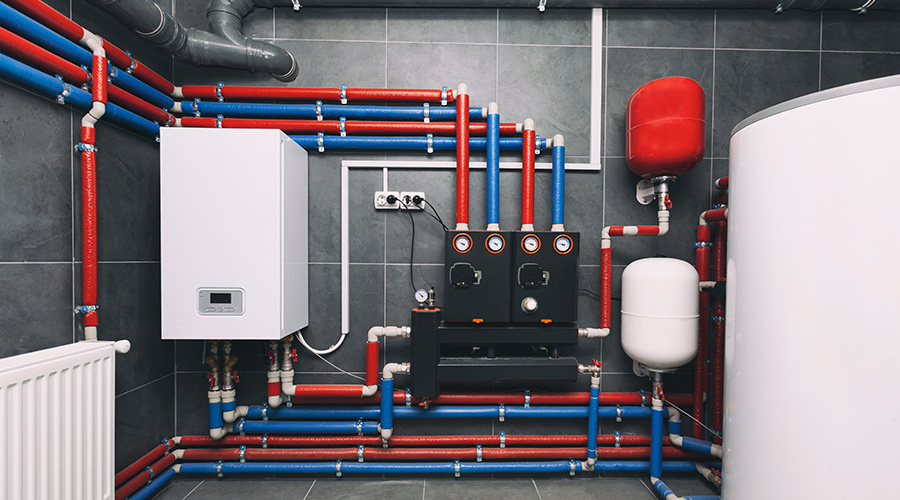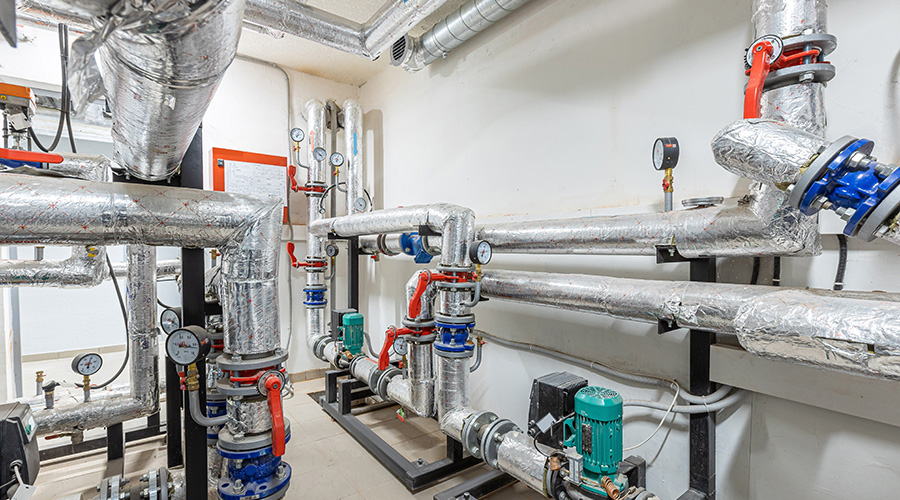Chilled Beam Ceiling Systems Promise Energy, Maintenance Savings
Chilled beam technology offers facility executives the opportunity to save energy, reduce mechanical noise and improve indoor air quality in retrofit, renovation and new construction projects. While the technology has been used in commercial space in Europe for more than a decade, it is just beginning to take root in the U.S.
Chilled beams are not building structural elements. They are hydronic HVAC components that circulate chilled or heated water and are designed to induce room air flow to cool or heat the space. Chilled beams get their name from their typically long and slender shape.
There are two main types of chilled beams: passive and active. A passive chilled beam is simply a casing with a cooling coil inside. Chilled water at 59 to 63 degrees F circulates through the coil. The warm air in the room rises and passes through the cooling coil. The resulting cooler air — less buoyant than surrounding warm air — flows down into the space. This constant, gentle circulation is caused by natural convection.
The active chilled beam requires direct air supply into the beam. Primary air (from the building’s air handling system) is introduced into the beam through high velocity nozzles that induce warm air to flow up into the beam and entrain it back into the room via slot diffusers. Active chilled beams provide effective humidity control via primary air supplied through the beams.
Neither passive nor active chilled beams have moving parts so they typically have long lives and low maintenance costs. Chilled beams can be part of a constant volume primary air system or a variable volume air system. They can also be controlled by regulating or isolating water flow through the beams. In any case, it is important to properly establish the relationship between temperature and humidity in the space and chilled-water temperature supplied to the chilled beam.
The technology was used recently on an interior renovation of a building on the campus of a major Massachusetts university that included 17 lecture halls. The building mechanical systems were only three years old when the installation of new audio-visual presentation equipment required an extensive upgrade to the HVAC and electrical systems.
Numerous analyses of classroom occupancy and loading scenarios were conducted and detailed site surveys were completed. The facility executive selected chilled beam technology because it allowed the existing cooling system to be reused and supplemented to accommodate the larger heat load generated by the state-of-the-art equipment called for in the building’s upgrade.
Chilled beam technology has not only proven itself to be more energy efficient than equivalent conventional systems, but also reduces sheet metal cost by eliminating a significant amount of ductwork. Based on the type of system used, it may require up to 50 percent less ductwork than conventional systems. In addition, this technology uses warmer water (ranging from 59 degrees to 63 degrees) than conventional system (44 degrees to 45 degrees), saving money on energy. Also, chilled beams can blend into most ceiling designs or can be installed just above a ceiling to hide them.
While this type of cooling system is virtually maintenance-free, one of its biggest challenges is that it requires precise humidity control to avoid condensation. Condensation control is important for any chilled beam system, especially in buildings with natural ventilation or with an “unoccupied” set back schedule on nights and weekends that has to be turned to an “occupied” mode in the morning. Furthermore, chilled beams must be properly located when they are used in combination with conventional diffusers so that the air distribution pattern from the beams will not be influenced by the diffusers.
Manufacturers are now offering multi-purpose chilled beam units. These are single units that include light fixtures, sprinklers, cooling coils and the chilled beams. Combining all of these elements into one unit offers simplified installation and saves on labor costs.
Alla Katsnelson, P.E., is a senior associate and supervising mechanical engineer at Syska Hennessy Group’s Cambridge, Mass., office. She has more than 20 years of experience as a mechanical engineer and is a LEED Accredited Professional. She has design experience in educational, commercial, institutional, research, and laboratory facilities throughout the United States and internationally.
Related Topics:











